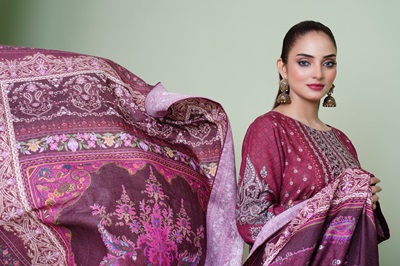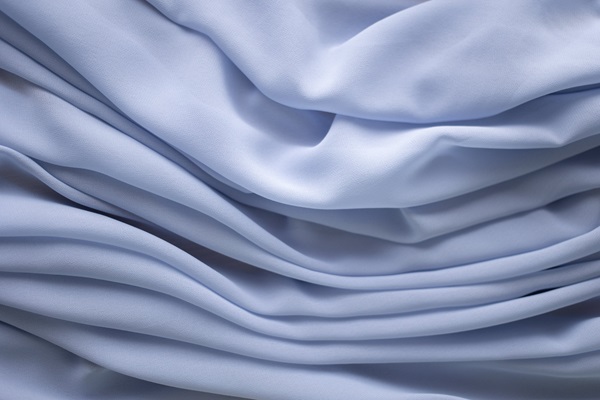How to iron silk can be a challenge for many. Silk, with its delicate nature, requires a careful approach to avoid damage. Yet, when done right, the results are stunning. Your silk garments can look as fresh and luxurious as the day you bought them. Understanding the right techniques can make all the difference, ensuring longevity and preserving the natural sheen of the fabric.
Silk is one of the most luxurious fabrics, prized for its lustrous sheen and soft touch. But ironing silk can be a daunting task, as it’s delicate and can easily get damaged if not handled correctly. In this guide, we’ll uncover expert techniques on how to iron silk, ensuring your garments remain pristine and captivating. With the right knowledge and tools, you can maintain the beauty of your silk attire for years to come.
Understanding Silk
Before diving into the process of ironing, it’s vital to understand silk’s nature. Made from the cocoons of silkworms, silk fibers are natural proteins. This gives the fabric its soft texture and shiny appearance. However, these proteins are also the reason silk is so sensitive to heat and moisture.
How to Iron Silk
Silk is a luxurious and delicate fabric that has been adored for thousands of years due to its lustrous sheen and soft touch. While it’s a popular choice for clothing, bedding, and various fashion accessories, silk is also notoriously tricky to maintain. One of the challenges that many people face with silk is ironing. Ironing silk improperly can result in permanent damage, including burns or loss of sheen. So, when it comes to silk, knowing how to iron it properly is essential.
Preparing the Silk for Ironing
Check the Label: Always start by checking the care label on your silk item. Some silk items are labeled as “dry clean only.” If this is the case, it’s best not to attempt ironing at home.
Clean the Silk: Ensure the silk item is clean before ironing. Any spots or stains can become more pronounced or even permanent if ironed.
Test a Small Area: Before ironing the entire garment, test a small, inconspicuous area. This step ensures that the iron’s temperature is suitable for the silk.
Setting Up Your Ironing Station
Choose the Right Iron: Use an iron with a silk setting or an adjustable temperature control. This ensures you can set the iron to a low and safe heat for the silk.
Water: Fill your iron with distilled water if it has a steam function. Tap water can leave mineral deposits on silk.
Ironing Board: Ensure your ironing board is clean and free from any debris. You can also lay a soft, white towel on top of the board for added protection.
Ironing the Silk
Temperature: Set your iron to the “silk” setting or the lowest temperature. It’s essential to ensure the iron isn’t too hot.
Turn Inside Out: To protect the outer side of the silk, always iron the garment inside out.
Use a Pressing Cloth: Place a thin white cotton cloth between the silk and the iron. This provides an added layer of protection against direct heat.
Avoid Dragging: Instead of dragging the iron, gently press it down on the fabric, lifting it off completely before moving to the next section.
Avoid Steam on High Heat: If your iron has a steam function, only use it if you’re sure the iron’s temperature is low. High heat combined with steam can damage silk.
After Ironing
Hang Immediately: Once you’ve finished ironing, hang the silk garment immediately to prevent any unwanted wrinkles from setting in.
Cool Down: Allow the silk to cool down and settle for a few hours before wearing or storing it.
Storage Tips
Storing silk correctly is equally crucial for maintaining its pristine condition.
Avoid Direct Sunlight: Always store silk garments out of direct sunlight to prevent fading.
Use Padded Hangers: If hanging silk items, use padded hangers to maintain the garment’s shape and ensure no sharp edges dig into the fabric.
Avoid Plastic: Do not store silk in plastic bags. Instead, use breathable fabric bags to allow the silk to breathe.
Alternative Methods
If you’re uncomfortable with ironing silk or if the garment is particularly delicate, consider alternative methods:
Steam: A handheld steamer can be a safer option for silk. Hold the steamer a few inches away from the garment, ensuring even coverage.
Wrinkle-release Sprays: These sprays can be used to ease out minor wrinkles. However, always test on a small inconspicuous area first.
Common Mistakes to Avoid
High Heat: Never use high heat when ironing silk. This can scorch the fabric, causing permanent damage.
Direct Ironing: Always use a pressing cloth or turn the garment inside out to avoid direct contact between the iron and silk.
Wetting the Silk: Unless you’re using a steamer, avoid getting the silk wet, as water spots can leave permanent marks.
FAQs
How do I iron silk without damaging it?
Ironing silk can be a delicate process. Always use a low heat setting on your iron, preferably the “silk” option if available. It’s recommended to place a thin cotton cloth between the iron and the silk fabric to prevent direct contact and potential burns or discoloration. Avoid using steam, as water can cause water spots or rings on silk.
Is it necessary to use a special kind of iron for silk?
No, you don’t need a special iron specifically for silk. However, an iron with an adjustable temperature setting is ideal. This allows you to choose a lower-heat setting suitable for silk. Additionally, an iron with a smooth, non-stick plate will glide over silk more gently, reducing the risk of snags or tears.
What should I do if I accidentally burn or discolor the silk while ironing?
If you accidentally burn or discolor silk, stop ironing immediately. Lightly dab the area with a damp white cloth, but avoid rubbing. Unfortunately, severe burns might be permanent. In such cases, consider consulting a professional cleaner or fabric expert for advice.
Can I use steam while ironing silk?
It’s generally advised against using steam when ironing silk. Steam can cause water spots, which might be difficult or impossible to remove. If you feel the need to use steam for stubborn wrinkles, do so sparingly and from a distance. Alternatively, consider using a steamer specifically designed for delicate fabrics.
Why does silk require special care when ironing compared to other fabrics?
Silk is a natural protein fiber, making it more delicate and sensitive to heat compared to synthetic fabrics. Excessive heat or direct contact with a hot iron can cause discoloration, shine, or even burns on silk. Its delicate nature also means it’s more susceptible to water damage, so always handle it with care.
Conclusion
Silk is a beautiful, luxurious material that requires careful handling, especially when ironing. By following the above guidelines, you can ensure your silk items remain in top condition and free from unsightly wrinkles or damage. Remember, the key to successful silk ironing is patience and gentle care. Whether you’re prepping a silk blouse for a special occasion or simply maintaining your favorite silk bedding, proper ironing techniques will help preserve the beauty and longevity of your items.
In case you found this article helpful, I would like to recommend some other articles that may be of further assistance:











